UNC is a public, open campus. What do experts recommend to keep students, staff safe?
Three times in the less than one month since classes began for the fall semester, two public universities in North Carolina have been the sites of gun-related incidents.
At N.C. A&T State University in Greensboro, an on-campus altercation involving people who were not students at the university resulted in one person being shot on Aug. 25.
At UNC-Chapel Hill, a professor was shot and killed in a campus laboratory building on Aug. 28, sending the campus into lockdown for more than three hours. Sixteen days later, on Sept. 13, the campus once again went into lockdown for more than an hour after a man allegedly threatened a campus dining worker with a gun in the student union.
The incidents were each undoubtedly nerve-racking for students, faculty and university employees. They also highlight a difficult-to-navigate dynamic when it comes to safety and security at public colleges and universities.
The universities, both part of the UNC System, are public campuses that are open to the communities surrounding them. University boundaries blend into the towns and cities that house them, and with more than 25,000 students at each campus, the schools are essentially big enough to be small towns themselves.
How, then, can the campuses keep students and staff safe? How can they monitor potential threats on campus and surrounding areas? What improvements might UNC, A&T and other public colleges make to their prevention and response protocols following incidents such as these?
The answer is complicated, experts told The News & Observer.
“There are people asking those same questions after each and every time these kind of events happen,” Paul Dean, president of the International Association of Campus Law Enforcement Administrators, told The N&O in an interview.

There generally isn’t a single, one-size-fits-all approach or solution to prevent violence on open campuses or improve universities’ responses to emergencies, Dean said, “but you can begin to chip away” at the issue with various comprehensive actions that meet the needs of each campus and their respective communities.
“There’s just too many variables to stop everything,” Dean said of open campuses, “but there are certain things you can put in place to be helpful.”
Campuses as ‘microcosm’ of nationwide gun violence
Marc Zimmerman, co-director of the Institute for Firearm Injury Prevention at the University of Michigan, told The N&O it is important to think of college campuses as part of their communities and American society at large — and not necessarily insular from them or the issue of gun violence at large.
“These are public places, and we want to keep them public places,” Zimmerman said, adding that he believes the country needs “a wholesale” change when it comes to addressing gun violence, including dedicating more research to the issue and what solutions would work best — much like the research that led to the advent and widespread use of seat belts in cars.
“It’s not just about the college campus itself,” Zimmerman said. “That’s just a microcosm of the issue.”
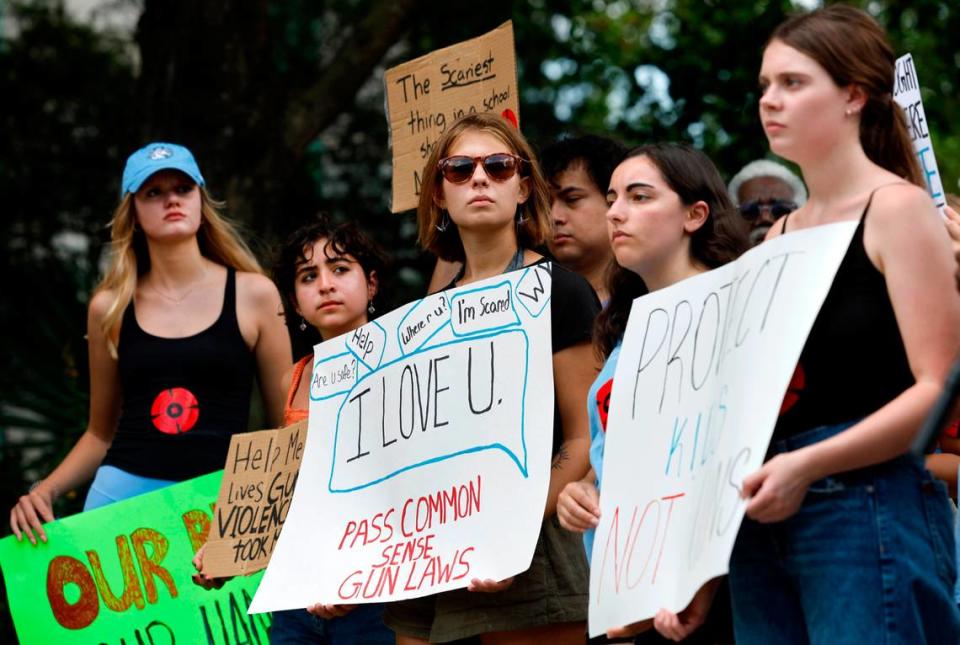
UNC Police Chief Brian James, in an interview with The N&O, said having an open campus offers many advantages — namely, that the public can visit and enjoy the space — “but it can be difficult to secure an open campus.”
Darrell Jeter, UNC’s director of emergency management and planning, noted that the university does not have gates or walls around the perimeter of the sprawling campus, which is intended to not restrict people from the surrounding community and around the state from coming to the university.
“This is a public space. Anyone that wants to come on our campus and enjoy our campus lawfully, we certainly welcome that,” James said. “But at the same time, we have a responsibility to make sure that the campus is safe, and make sure that we do everything we can to remove anyone who comes here and intends to disrupt that.”
Metal detectors? Cameras?
Because college campuses like UNC’s are so large, Zimmerman and Dean said, some security measures that K-12 schools put in place to prevent violence would be nearly impossible to implement at universities.
“The emphasis is that people have to change their lens, and they’ve got to look at an open college campus as a small city,” Dean said.
Metal detectors, for example, are easier to implement at a high school that might only have a few buildings, Dean said. But on a sprawling campus with dozens, or even hundreds, of buildings, the necessary staffing alone to implement detectors would be impractical.
Every door with a metal detector would need to be staffed, Dean said, and the process would likely lead to long delays to get into buildings — almost like an airport, where travelers are advised to arrive two hours early in case of long security lines. At UNC, there are generally 15 minutes in between class sessions each day.
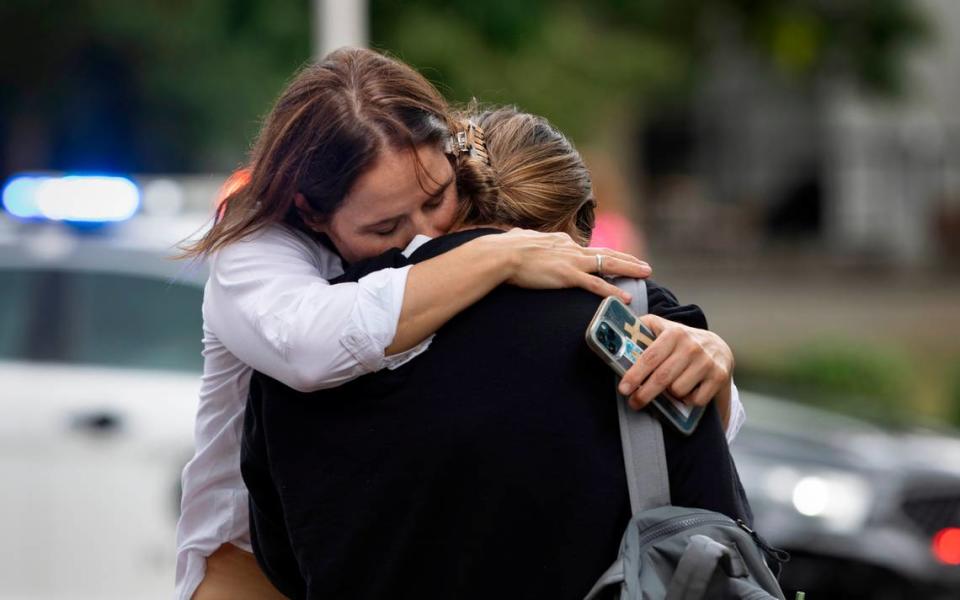
Even installing metal detectors just at select buildings, such as UNC’s student union, where the most recent gun-related incident on campus took place, would come at a hefty cost.
When metal detectors were installed at two entrances to the state Legislative Building in Raleigh in 2018, it was estimated to cost more than $1 million, which included equipment, electrical upgrades and additional staff needed to work the detectors, The News & Observer reported at the time.
Other measures and technology, such as campus surveillance cameras, can help police identify or track a suspect, but using cameras alone isn’t enough to stop or entirely prevent an instance of violence, Zimmerman said.
James said the university had engaged in “a number of conversations” prior to the two recent incidents about technologies that could be used to improve security, but said there had been “no final decisions on what that would look like going forward.”
“We’re trying to figure out how to best secure the campus, but also preserve the experience of being on campus,” James said. “Because sometimes with greater security can come a lot of inconvenience, depending on what you decide to implement.”
How UNC monitors, prepares for emergencies
James said UNC is “constantly thinking about ways to improve safety on campus,” including by offering emergency training to campus members.
The university does not currently require active shooter or other emergency training for faculty, though Jeter noted training is required for “those who have defined roles in our campus emergency response plans.”
James said “it is absolutely best practice to have as many people trained as we possibly can,” but said any mandates for training would need to be decided by university leadership. UNC Chancellor Kevin Guskiewicz said at a faculty council meeting on Sept. 8 that the university “will assess whether more required trainings should be considered,” with input from faculty and others.
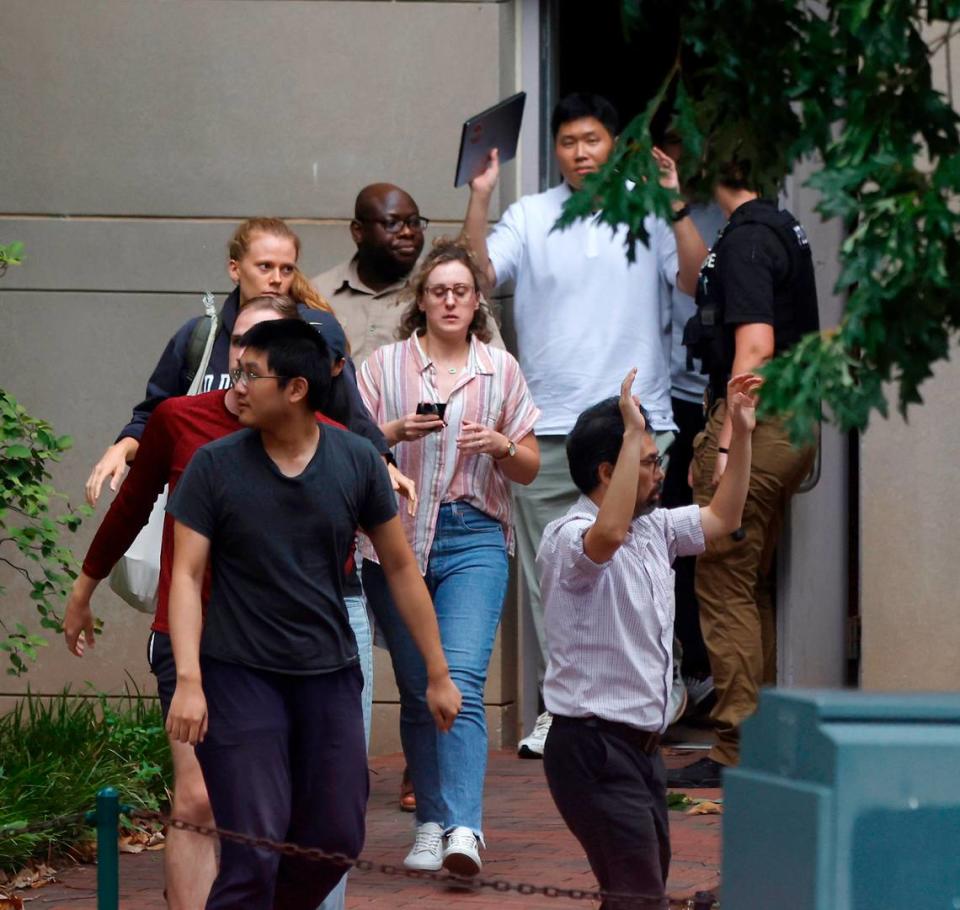
James also said campus police perform building security surveys to ensure classroom and building locks are functioning properly.
Responding to a public records request, UNC told The N&O that the majority of campus classrooms have interior door locks after a multi-year project “to provide additional security in campus classrooms.” The project, which began in 2018, installed the locks in phases based on classroom size. The project’s last phase, which focused on classrooms that can fit between 10 to 24 students, was completed in “early September.”
UNC spokesperson Erin Spandorf said there are additional rooms on campus that individual departments might use as classroom space, and the university “is currently doing an inventory of these rooms and will install interior locking hardware if it is not already installed.”
James said his department tries to strategically deploy officers on campus, aligning their presence with “peak times” when the most people are on campus. That’s typically Monday through Friday, “early morning until the afternoon,” James said, or on the weekends when there might be a large-scale athletics event or another special event.
Having officers on campus also allows officers to be visible to students, staff and the public, James said, a tactic that he said creates an atmosphere where people would be more likely, or more comfortable, reporting unusual or suspicious behavior on or near campus.
Referral forms for people who show signs of violence
Zimmerman and Dean both pointed to referral and reporting protocols for people on campus who may exhibit signs of mental distress or potential violence as one of the best options for open campuses to monitor potential threats — and stop them.
As opposed to individual technologies or solutions, they said, such platforms allow for a more comprehensive approach to monitoring and addressing potential threats that involve law enforcement, mental health professionals and others who are equipped to address such issues.
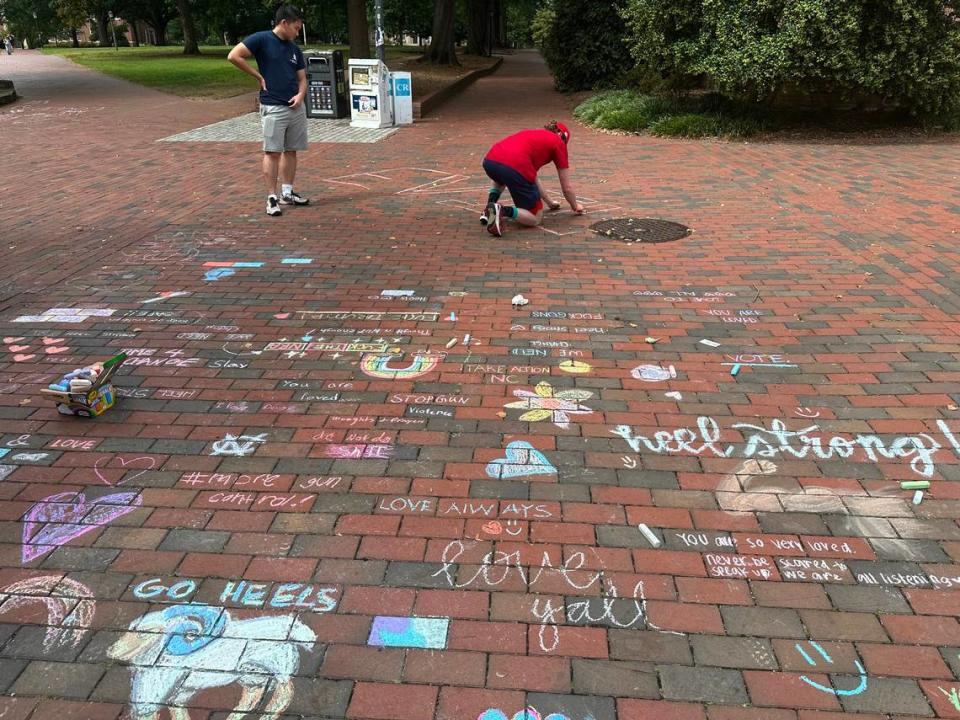
Zimmerman noted that Sandy Hook Promise, a nonprofit organization formed after the 2012 elementary school shooting that killed 26 students and adults, offers programs for K-12 schools that both train students and staff to recognize signs of potential threats and provide reporting platforms. The group’s anonymous reporting platform is used by districts across the country and is used statewide in North Carolina.
Zimmerman said streamlined, comprehensive programs like those offered by Sandy Hook Promise generally don’t exist on college campuses, or may not be as widely known. Attending a large school with thousands of students can also make it difficult for students and faculty to pay close attention to potential threats, as they may only see some peers in one class a few times a week, as opposed to spending all day with them in a K-12 setting.
Locally in the Triangle, at least UNC and NC State University provide online forms for reporting concerning behavior of others on or near campus. Both schools direct people to instead call police or 911 for imminent threats.
UNC’s platform, listed online as a “care referral form” through the Dean of Students office, is available for anyone to submit concerns regarding any student at the university.
Through a public records request, UNC told The N&O its form received more than 900 submissions in 2021, more than 1,000 in 2022 and more than 600 to-date in 2023. The referrals ranged “from students not answering calls/texts to academic performance/attendance to well-being,” the university said.
NC State offers an online platform for anyone to submit concerns about behavior by students, employees or people unaffiliated with the university.
Dean said such reporting forms and protocols can be helpful for monitoring potential threats on campus, but may not be as effective for doing so with potential threats that come from outside of the campus.
Dean emphasized the importance of campus police and mental health professionals communicating with the campus community about what to do if they suspect someone could pose a threat to campus, as well as regularly collaborating with off-campus police and mental health agencies.
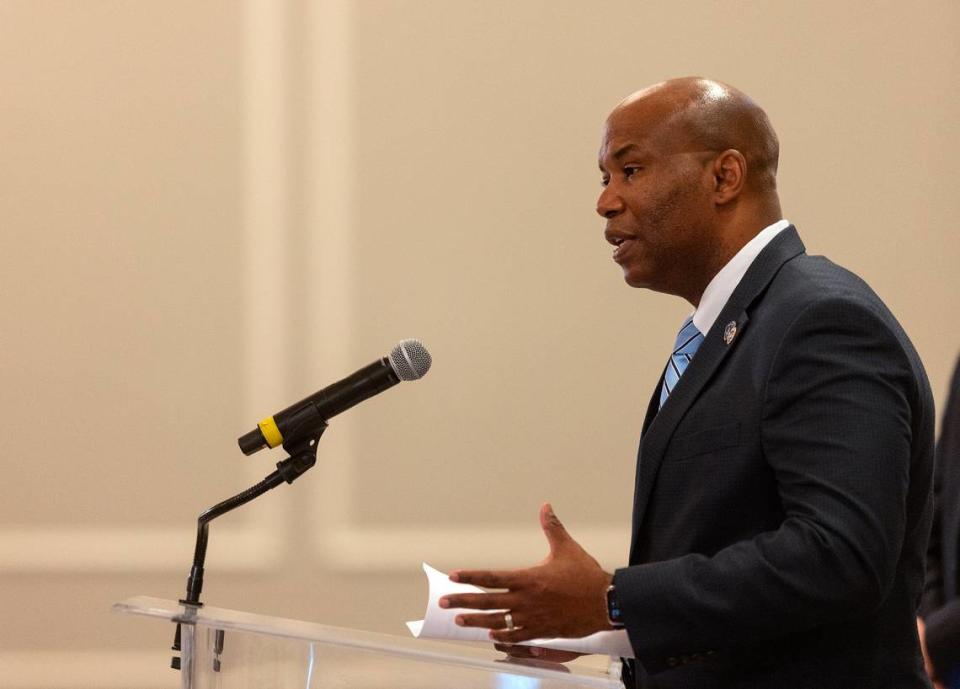
James said his department has an officer who assesses “any kind of threat to campus,” as well as an officer who is assigned to consult with the State Bureau of Investigation on threats.
He said UNC police interact regularly with other law enforcement agencies, including Chapel Hill and Carrboro police and the Orange County sheriff’s department. Those agencies and others, which James noted are on campus regularly for large-scale athletics events, responded to both of the recent incidents on the university campus.
When a threat comes, communication is key
Communication is critical during shootings, violent incidents or other emergencies on campus, Dean said.
At a faculty council meeting following the fatal UNC shooting, some faculty offered feedback on the alerts sent during that lockdown, saying they wish the nature and location of the threat had been made more clear. Faculty also said they wished updates were given more often and through platforms other than X, formerly known as Twitter.
“There’s some danger in providing too much information in these situations,” Guskiewicz told members of the faculty council on Sept. 8, adding that he wasn’t ruling out that the university might “refine” the university’s alert protocols “in some way.”
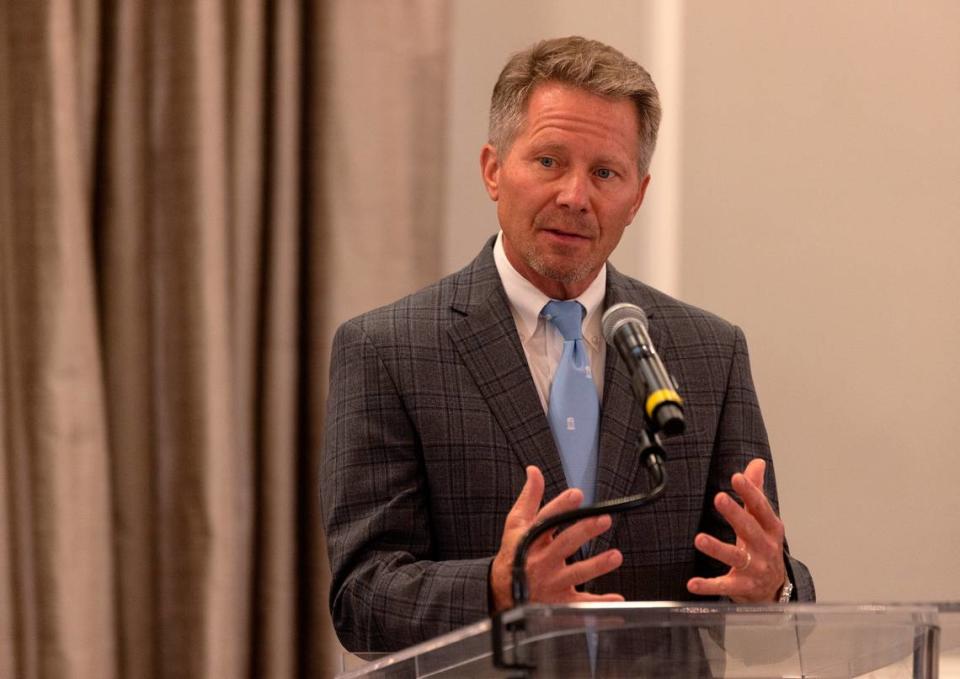
Jeter, the university’s emergency management director, said the university wants “to make sure that we’re able to reach our population using multiple methods.”
“As technology evolves, we want to be aware of the latest, greatest, relevant technology that we can have as a part of our resources and our systems to achieve our ultimate goal,” Jeter said.
Dean said alert systems vary from campus to campus, with some offering more interactive features than others. At the University of New Hampshire, where Dean is the police chief, the university’s alert platform is interactive, and campus members can send photos or text messages about possible threats they witness. Text message capabilities on alert platforms may be more comfortable for students to use, Dean said, and it can also keep students and staff safe from an active shooter, when talking on the phone with 911 might call attention to their hiding places.
Dean said it’s helpful to provide the campus with as much information as possible in emergencies, but also noted that it may be difficult at first for dispatchers to identify exactly where the threat is taking place or if it has moved since the first 911 call.
Perhaps the most important step a university could take on its alert system is to educate the campus about how the system works, Dean said, including the different types of messages it might send out and the level of threat associated with each.
UNC implemented changes to its Alert Carolina system in mid-August, before the fatal shooting. The changes mostly impacted how campus members receive alerts about some crimes on or near campus; alerts about active emergencies are still sent by text and email, and outdoor campus sirens sound in those instances.
“You better make sure that in any emergency situation, that your community, your campus community, trusts your alert system,” Dean said. “You want to make sure that they can trust it — that when that comes out, they’re listening.”
Guns on campus could lead to confusion
In addition to the chancellor fielding questions from faculty, the Aug. 28 fatal incident also prompted the university to ask for feedback on its response to the emergency situation through an online portal. The message providing the link to the portal was sent less than five minutes before the Sept. 13 incident began at the student union.
Others outside the university have also provided feedback or questioned protocols surrounding threats on campus, including North Carolina Speaker of the House Tim Moore. Moore last week questioned UNC and other campuses being gun-free zones, asking why students have to be unarmed “when clearly there’s a way bad guys can get on campus.”

It is a felony under North Carolina law to carry a gun on educational property in the state, including colleges.
Zimmerman said allowing guns on campuses could create a more dangerous scenario if there is a real, active threat on campus, as police — or armed bystanders — responding to the scene may not be able to quickly determine who poses the threat, as opposed to who is trying to suppress it. Such confusion could lead to a slower apprehension of the suspect, or lead to the bystanders being injured.
“It’s not like in the movies, where the good guys wear one color uniform and the bad guy wears the other,” Zimmerman said. “It’s not ‘Star Wars.’”
Dean, noting he didn’t want to to debate the Second Amendment or comment on choices individual states or campuses may make on the issue, said he would be concerned about whether training was required for people who might carry guns on campus, as well as the quality and schedule of such training.
He echoed Zimmerman’s point, saying it would be difficult for him, as a campus police chief, to know that someone else with a gun in an active shooting was not also a threat.
“I think that people can best serve as real good witnesses,” Dean said of bystanders’ roles in responding to an attacker, “if they spend the time and look at things.”
Staff writer Tyler Dukes contributed to this report.

